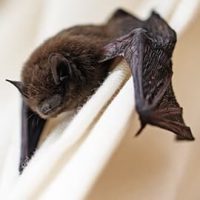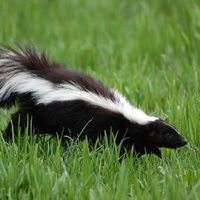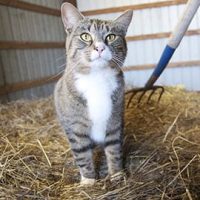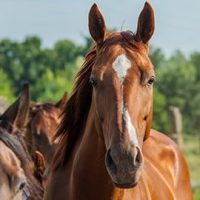Core Vaccination:
PROTECTING HORSES FROM 5 DEADLY DISEASES
Sponsored By:





Find out what veterinarians recommend for your horse.
By Christa Lesté-Lasserre, MA
It’s heartbreaking to see our horses sick. They hang their heads low, move slowly, look depressed. We give them lots of love and rest, administer medications from their veterinarians, and hope for a speedy recovery.
That’s how it is when it’s a mild or even moderate disease. When disease is potentially fatal, though, there’s also the possible heartbreak of losing our horses. Horses with West Nile virus (WNV), Eastern equine encephalomyelitis (EEE), or Western equine encephalomyelitis (WEE) can spike high fevers, tremble, smash their heads against walls, and fall and struggle to get back up. Horses that contract tetanus experience painful muscle spasms and respiratory failure, with few recovering. Or in the case of rabies—which is 100% fatal in equids—a sick horse endangers the lives of humans, as well.
The one bit of good news about these horrific diseases is that we can significantly reduce our horses’ risk of contracting them, and in some cases they’re entirely preventable. All it takes is a simple injection once or twice a year to keep our horses safe from such agonizing and deadly diseases.
The high mortality rate, human risk, and vaccines’ efficacy have led to veterinarians identifying five vaccines they’ve considered to be “core”—those that every horse throughout the United States should receive at least annually, no matter its competitive level, location, housing, movement, or exposure to other horses.
The Deadly Five
T he core vaccines target five serious diseases that have high mortality rates. Without vaccination, they’re nearly impossible to prevent—and every horse on every kind of farm is at risk. The American Veterinary Medical Association (AVMA) collaborated with the American Association of Equine Practitioners (AAEP) to identify diseases that are endemic to a region, have potential public health significance, require reporting to government health authorities, are virulent/highly infectious, and/or pose a risk of severe disease, according to the AVMA. “These are very dangerous diseases, but there are effective and affordable vaccinations for all of these threats,” says Dr. Paul Lunn. Dr. Angela Bordin shares basic descriptions of these “dangerous five” diseases.
1. Rabies
Horses usually pick up the virus that causes rabies via bites from infected (rabid) wild animals, such as raccoons, skunks, bats, or foxes. The incubation period varies from a few weeks to several months. The virus likely multiplies at the site of bite and, when it reaches peripheral nerves, rapidly reaching the horse’s brain. Once there it spreads to other organs and tissues and, through cranial nerves, reaches salivary glands and possibly nasal secretions. Once the virus becomes established, its effects are devastating—and irreversible. Clinical signs described in horses are highly variable, but common signs can range from lameness, poor athletic performance, and lethargy to depression, aggressiveness, convulsion, and recumbency (lying down or falling and being unable to rise). With the onset of clinical signs, there’s no effective treatment, and horses should be euthanized. If you see a wild animal exhibiting unusual behavior, contact your local animal control agency immediately to remove the animal. Due to the potential risk of virus transmission from horses and other infected animals to humans, animals suspected of having rabies should be handled by individuals who have been appropriately vaccinated against rabies.
2. West Nile virus (WNV)
West Nile virus is an infectious agent transmitted via mosquito bites. It infects birds, humans, and horses and other mammals such as dogs. The virus enters the bloodstream and travels to the central nervous system, where it causes brain and spinal cord inflammation and leads to clinical signs within three to 15 days. These include ataxia (incoordination), muscle trembling, depression, lethargy, weakness, and sometimes fever. Disease severity varies, and not all horses develop clinical signs. Among those that do, one-third die from the disease. Among the survivors, 40% have lasting neurologic effects, mainly weakness and ataxia. Thanks to an aggressive vaccination program, the number of WNV cases has dropped in the U.S. An additional way to reduce risk of all mosquito-borne diseases is to control mosquito populations on the farm, by eliminating or reducing mosquito breeding habitats, and in conjunction with your local mosquito control authority.
Dr. Paul Lunn

David Paul Lunn, BVSc, MS, PhD, MRCVS, Dipl. ACVIM, is the dean of the School of Veterinary Sciences at the University of Liverpool, in the U.K. He specializes in equine immunology and infectious disease and was a member of the first AAEP core vaccines guidelines review group, serving as a consultant since then.
Dr. Angela Bordin

Angela Bordin, PhD, is assistant professor of immunology and infectious disease in the Department of Large Animal Medicine at Texas A&M University’s School of Veterinary Medicine, in College Station. She specializes in infectious diseases in neonatal foals.

3. Eastern equine encephalomyelitis (EEE)
Eastern equine encephalomyelitis is a viral disease that’s also transmitted through mosquito bites. The incubation period can vary from a few days to a few weeks. Clinical signs include high fever; colic; anorexia; and neurologic signs as depression; blindness; ataxia; head-pressing or tilt; recumbency; seizures; sleepiness; circling; and paralysis of the pharynx, larynx, and tongue. Zero to 15% of affected equids survive EEE infection, and those that do usually have lifelong neurologic impairments, such as loss of full control over bodily movements. In the United States EEE occurs mainly in the East, especially in the South, but it has occurred as far west as Texas and as far north as Wisconsin in the Midwest. Birds harbor the virus silently—showing no signs—and act as reservoirs. Mosquitoes that feed on infected birds and mammals transmit the virus from birds to horses and humans.
4. Western equine encephalomyelitis (WEE)
Like EEE, WEE develops after exposure to the virus transmitted via bites from infected mosquitoes. It causes clinical signs similar to those of EEE. Fortunately, its effects are not quite as devastating: 50% of affected horses can survive a WEE infection. It is important to note, however, that at least half of all WEE cases end in death and neurologic deficits are common among survivors. The WEE geographical region extends west of the Mississippi River. The good news is there have not been recent reports of WEE in horses. The bad news, though, is this doesn’t mean the virus isn’t present. Scientists have detected the virus in birds (which, as with EEE, don’t develop clinical signs but act as inapparent carriers), so the threat of infection in horses still exists.
5. Tetanus
Tetanus is caused by a potent neurotoxin produced by Clostridium tetani, an anaerobic (not requiring oxygen) bacterium living in soil and feces. Bacterial spores get into the horse’s body through injuries to the skin, both simple—cuts, scrapes, and small punctures—and more serious, such as surgical incisions. (Though we often think of wounds from rusty objects, such as nails and barbed wire, as the source of the bacterium that causes tetanus, it’s the injuries they create that are the offenders. Rust itself isn’t the problem; rather, rusty objects are often found in places that harbor anaerobic bacteria.) Once they gain entry into the boy, the spores produce toxins that reach peripheral nerves (via the bloodstream) and, ultimately, the central nervous system. Clinical signs include muscle spasms, stiffness, extended neck and head, third eyelid prolapse, retracted lips, and an elevated tail. Some horses have difficulty breathing and can become recumbent. Treatment includes muscle relaxants, padding stalls for animals that have difficulty rising, removing infection (surgically and with antibiotics), neutralizing unbound toxin with antitoxin, and ensuring horses stay hydrated and receive appropriate nutrients. Despite treatment, up to 75% of affected horses die.
PHOTO: iStock
Pain and Suffering:
A SERIOUS WELFARE ISSUE
These core diseases don’t just lead to death. They lead to excruciating, agonizing death. “These diseases are profoundly painful,” says Lunn. “Tetanus is one of the most painful diseases that occurs,” he says. “The muscle spasms are agonizing. The encephalitic diseases are some of the ugliest diseases imaginable. And as for rabies, you only need to see a video of a rabid horse to see how horrible it is. The welfare issues related to these diseases are phenomenal.”
“After seeing what it looks like for a horse to have one of the diseases, I just can’t imagine why you wouldn’t vaccinate.”
Dr. Claudia True
Dr. Claudia True agrees. “Those horses definitely suffer,” she says. “With encephalitis, for example, they are in such horrible pain, they push their heads into the walls and just don’t even seem to know where they are. One horse with EEE in our practice pushed his head into all four walls of his stall and had rubbed his skin down to raw tissue.” That horse was eventually euthanized, True says. The suffering is particularly tragic knowing how preventable the diseases are, she adds. “After seeing what it looks like for a horse to have one of the diseases, I just can’t imagine why you wouldn’t vaccinate,” she says.
Dr. Claudia True

Claudia K. True, DVM, focuses on preventive medicine and equine dentistry at Woodside Equine Clinic, in Ashland, Virginia. A regular speaker at professional conferences and veterinary schools, she has served as president of the Virginia Veterinary Medical Association (VVMA), president of the Virginia Association of Equine Practitioners (VAEP), and as a member of the VVMA Board of Directors.
STORY CONTINUES BELOW
PHOTO: iStock
Every Horse on Every Farm Is at Risk
You think you’ve got good biosecurity. Your horses are on an isolated farm far from other equids. You keep the place clean and free of debris. There’s nothing dangerous that your horse could get injured on. It doesn’t matter. Veterinarians say there’s really nothing you can do to prevent these core disease sources from getting onto your property and infecting your horses. “WNV, EEE, and WEE are carried by mosquitoes,” says True. “Biosecurity can’t really do much about that. If you’re outside (when mosquitoes are active) you’re at risk.” And horses, by their nature, are usually kept outside. As for tetanus, the casual bacterium is widely distributed “in the soil, so it doesn’t matter if you have a beautiful place,” True says. “Bacteria like beautiful places, too.” Dr. Kimberly J. Harmon seconds that opinion. “Just because it’s a well-cared-for horse in an endemic area doesn’t mean it’s not susceptible to these diseases,” she says.
Dr. Kimberly Harmon

Kimberly J. Harmon, VMD, is a senior associate at Fairfield Equine Associates, in Newtown, Connecticut. She focuses on the equine athlete and lameness and supervises Fairfield Equine’s externship program for veterinary students.
PHOTO: iStock
Rabies:
The most overlooked and underestimated disease among the deadly five
W hen we think of rabies, we might think of Cujo, the rabid Saint Bernard that nearly kills a housewife and her young son in Stephen King’s 1981 novel of the same name. Or we think of that traumatic scene in the black-and-white 1962 film depiction of “To Kill a Mockingbird,” with Gregory Peck getting his gun ready to shoot that foaming rabid dog coming down the street. But rabies isn’t a thing of the black-and-white past. It’s not just a mad-dog disease. And it’s not some far-fetched basis for a horror book as unlikely to happen as a “Jaws” attack. The rabies virus is alive and well in 2018, infecting thousands of animals—mainly wildlife and stray cats—throughout the United States. More than 90% of the nearly 6,000 reported cases of rabies per year occur in wildlife. But domestic dogs, cats, cattle, and horses all represent dozens of cases annually, according to the U.S. Centers for Disease Control and Prevention (CDC). More importantly, wildlife—bats, raccoons, skunks, foxes—and stray cats can easily access our horse farms. In fact, these potential rabies sources often live in our barns. Perhaps that explains why horses are nearly four times more likely to acquire rabies than dogs, according to calculations based on recent statistics provided by the CDC and animal population censuses.
U.S. Statistics (2016) | |
|---|---|
Total Pet Dog Population: 78 million | Total Horse Population: 7.2 million |
Number of rabid dogs: 58 | Number of rabid horses: 20 |
0.74 cases per million dogs | 2.8 cases per million horses |
Sources: CDC, American Society for the Prevention of Cruelty to Animals, American Horse Council
The Center for Disease Control recorded more than 5,000 rabid animal cases in 2015:



















Vaccines:
Safe, inexpensive, effective
T he five core vaccines reduce the risk of acquiring these diseases to close to zero, especially when horses are revaccinated during peak periods, says True. What’s more, they’re associated with very few side effects. “The risks are so low with these vaccines,” she says. However, concerns about vaccination consequences have spilled over from human medicine “anti-vaxxers” into the equine world, says Harmon. But those fears are unjustified. “Some people are under the impression that vaccines could be harmful for the horse or put the horse under other health issues,” she says. “But on the whole, that’s a misconception.”

Furthermore, the costs of vaccination are minor—depending on the area of the country, $100 to $300 plus farm call fees—compared to the expense of treating the disease itself. Some clinics, like Woodside Equine where True operates, offer annual wellness packages that include yearly vaccines, so they’re not even an extra expense but part of a set, prepaid budget. “This shouldn’t be a challenge for someone who owns a horse,” says Harmon. Of course, unanticipated financial challenges could hamper an owner’s ability to pay for small expenses such as vaccines. Even so, vaccinations are a good investment, since palliative care for affected horses can extend into the thousands of dollars. “For each of these diseases, there’s a vaccine that’s simple and highly effective,” says Lunn. “There’s no sense to not vaccinate a horse against them.” Most of the diseases for which core vaccines exist are relatively uncommon, except for tetanus, which appears “not infrequently in unvaccinated horses,” he adds. But regardless of that, the risk of these diseases occurring at all just isn’t worth it. “If you consider losing a single horse in your life that you value and love, the justification for vaccination is very strong,” Lunn says.
STORY CONTINUES BELOW
PHOTO: Courtesy of Zoetis
Responsible Horse Ownership
V accination doesn’t just protect our own horses. It can also contribute to wider protection of other animals and limit disease spread. “Especially with rabies … there’s a very real zoonotic risk,” says Lunn.
Yearly Vaccinations
Research supports yearly vaccinations (after an initial primary vaccination series the first year) throughout a horse’s life for all these core vaccines, based on “very stringent testing,” says Lunn. “There’s no data for beyond a year at this time,” he says. “Vaccinating less frequently means taking the risk of reduced immunity to these diseases.” True agrees, adding that additional boosters might be necessary in certain regions during major outbreaks of specific core diseases—especially EEE and WNV in endemic areas like the Southeast. Many horses in her practice receive vaccines twice a year for that very reason, she says. It’s also a good idea to start with a primary series followed by yearly vaccination of horses with an uncertain vaccination history, says True. Most veterinarians recommend yearly vaccination in the spring during annual wellness exams so that it becomes a routine and prevent unintended lapses in immunity resulting from missed years. Sick or older horses or those with well-managed chronic health issues shouldn’t be deprived of annual vaccines, says Harmon. It’s just important to adjust the timing of the injections. “The whole point of a vaccine is that you’re stimulating an inflammatory response,” she says. “If the horse is already fighting off something else, then you might make that worse with the vaccine.” Vaccinate once they’re well, she says. For older horses, choose the time of year when they’re the healthiest—usually spring or summer. In horses with chronic laminitis, for instance, avoid vaccinating during times when other risk factors are present, such as laminitic flare-ups, times of year when the pasture is greenest, or before a farrier visit. Consult your veterinarian to develop a customized vaccination program for your horse.
Take-Home Message
T he bottom line is that vaccines are an inexpensive way to prevent serious—and even deadly—diseases in our horses. By following the AAEP’s core vaccine recommendations, you’ll give your horse the best chance at remaining healthy despite potential exposure to EEE/WEE, rabies, tetanus, and WNV.

Author: Christa Lesté-Lasserre
Christa Lesté-Lasserre, MA, is a freelance writer based in France. A native of Dallas, Texas, Lesté-Lasserre grew up riding Quarter Horses, Appaloosas, and Shetland Ponies. She holds a master’s degree in English, specializing in creative writing, from the University of Mississippi, in Oxford, and earned a bachelor’s in journalism and creative writing with a minor in sciences from Baylor University, in Waco, Texas. She currently keeps her two Trakehners at home near Paris. Follow her on Twitter @christalestelas.
Editor-In-Chief: Stephanie L. Church
Digital Managing Editor: Michelle Anderson
Editorial Team: Alexandra Beckstett, Erica Larson
Art Director and Graphics: Brian Turner
Digital Producer: Jennifer Whittle
Publisher: Marla Bickel





